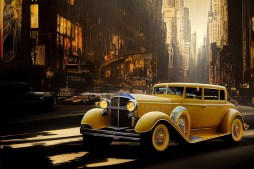The Evolution of Drive-In Cinemas: How They Have Adapted over Time
Drive-in cinemas have long been an integral part of American culture, providing a unique and nostalgic movie-watching experience. Over the years, these outdoor theaters have evolved and adapted to changing times, ensuring their survival in an ever-changing entertainment landscape. In this article, we will explore the history and evolution of drive-in cinemas and how they continue to captivate audiences today.
The Birth of Drive-In Cinemas
In the early 20th century, as automobiles became increasingly popular, Richard Hollingshead Jr., an innovative entrepreneur from New Jersey, came up with the idea of a theater where people could enjoy movies from the comfort of their cars. In 1933, he opened the first drive-in cinema in Camden, New Jersey. The concept quickly gained popularity as it offered a novel way for families to enjoy movies together.

Initially, drive-ins faced several challenges. The technology required to transmit sound directly into car radios was still in its early stages. However, with advancements in technology and continuous improvements made by drive-in owners, sound quality gradually improved. By the 1950s and 1960s, drive-ins had become a popular form of entertainment across America.
The Golden Age and Decline
During the 1950s and 1960s, drive-in cinemas experienced their golden age. With over five thousand theaters operating nationwide during this period, they offered a unique blend of movies under the stars and concessions delivered right to car windows. Families flocked to these outdoor theaters for a night out that combined entertainment with convenience.
However, as urban areas expanded and land values increased during the following decades, many drive-ins faced closure due to rising real estate costs. Additionally, competition from multiplex cinemas that offered more screens and better sound systems posed another challenge for these open-air venues.
By the late 1980s, the popularity of drive-ins had significantly declined. Many theaters were forced to shut down or convert their lots into shopping centers or housing developments. It seemed that drive-in cinemas were becoming a relic of the past.
Revival and Adaptation
Fortunately, nostalgia and the desire for unique experiences led to a revival of drive-in cinemas in recent years. A new generation of moviegoers, longing for a break from traditional indoor theaters, rediscovered the charm of watching movies from their cars.
Drive-in theaters began to adapt to modern technology and changing audience preferences. The transition from traditional film projectors to digital projection allowed for better image quality and more diverse programming options. Some drive-ins even started hosting live events such as concerts and comedy shows during daylight hours to attract a wider range of visitors.
Furthermore, drive-ins have embraced social media and online ticketing platforms to connect with their audiences more effectively. By leveraging digital marketing strategies, they have been able to reach new customers and build a loyal fan base.
Drive-In Cinemas Today
Today’s drive-in cinemas have become more than just places to watch movies; they are cultural hubs that offer unique experiences. Many theaters now feature food trucks, playgrounds, and themed nights, attracting families and groups of friends looking for an entertaining night out.
During the COVID-19 pandemic, when indoor movie theaters faced closures or restrictions, drive-ins experienced a resurgence in popularity. They provided a safe way for people to enjoy movies while maintaining social distancing guidelines.
In conclusion, drive-in cinemas have come a long way since their inception in the early 20th century. From their humble beginnings as an innovative idea by Richard Hollingshead Jr., they have evolved into immersive entertainment venues that continue to captivate audiences today. Despite facing challenges over time, the nostalgia associated with outdoor movie-watching has ensured their survival and adaptation in an ever-changing entertainment landscape.
This text was generated using a large language model, and select text has been reviewed and moderated for purposes such as readability.


